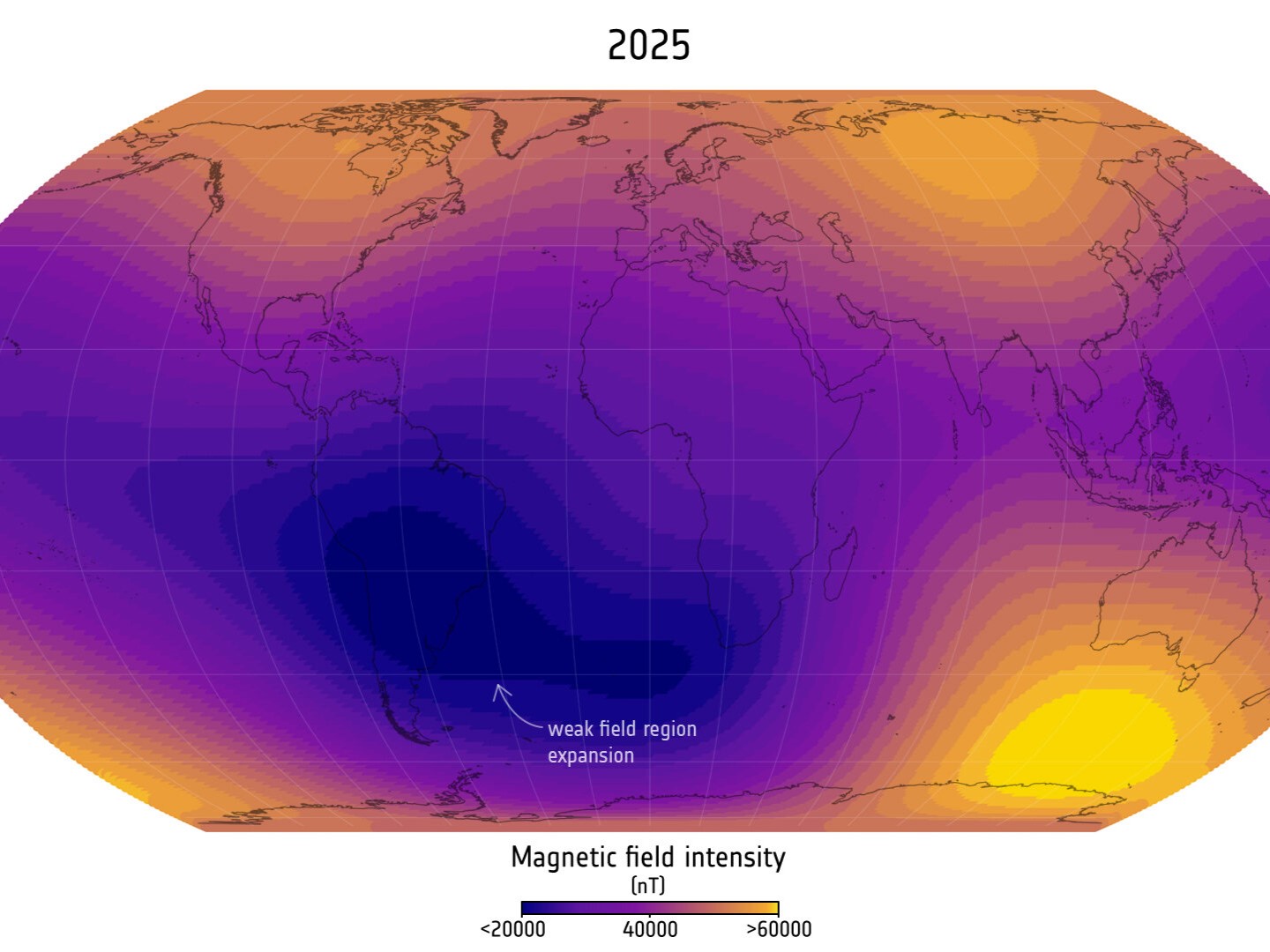The European Space Agency’s (ESA) Swarm satellite has identified a rapidly expanding anomaly in the Earth’s magnetic field, marking a significant development in our understanding of geomagnetic changes. This anomaly, known as the South Atlantic Anomaly, has drawn attention due to its implications for both space research and technology on Earth.
Significance of the Discovery
The South Atlantic Anomaly is a region where the Earth’s magnetic field is particularly weak. It stretches from the coast of West Africa to South America, affecting various satellites that traverse this area. According to ESA, this anomaly has been growing in intensity and size over recent years, a trend that could have serious implications for satellite operations and other technologies reliant on stable magnetic fields.
ESA’s Swarm mission, launched in 2013, consists of three satellites that measure the Earth’s magnetic field with unprecedented precision. The data collected by these satellites reveals that the South Atlantic Anomaly is not only expanding but also deepening, which raises questions about its long-term effects on the Earth’s magnetic environment.
Potential Impacts on Technology
The implications of this growing anomaly extend beyond academic interest. Satellites operating in or near the South Atlantic Anomaly experience increased radiation exposure, which can lead to operational challenges and even damage. For instance, the anomaly can disrupt the functioning of satellites, affecting communication, navigation, and imaging systems.
ESA emphasizes the importance of monitoring these changes, as they provide essential insights into the dynamics of the Earth’s magnetic field. Understanding the behavior of the South Atlantic Anomaly could help mitigate risks for satellites and other technologies that depend on a stable magnetic environment.
As research continues, scientists are keen to uncover the underlying causes of the anomaly’s growth. This includes examining the complex interactions between the Earth’s core and the magnetic field, as well as studying historical data to identify patterns and predict future changes.
The Swarm mission’s findings underscore the need for ongoing observation and research in the field of geomagnetism. With the Earth’s magnetic field undergoing constant shifts, the implications for both space exploration and terrestrial technologies remain significant. The ESA continues to lead efforts in this area, providing critical data that informs our understanding of not just the South Atlantic Anomaly, but the Earth’s magnetic field as a whole.






































































